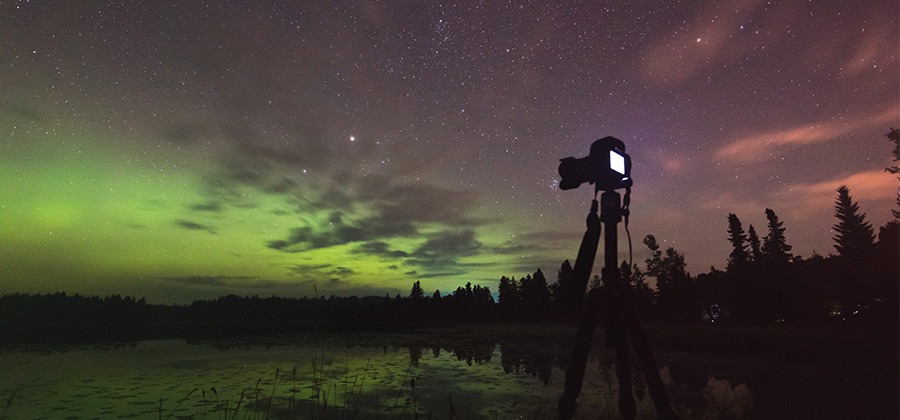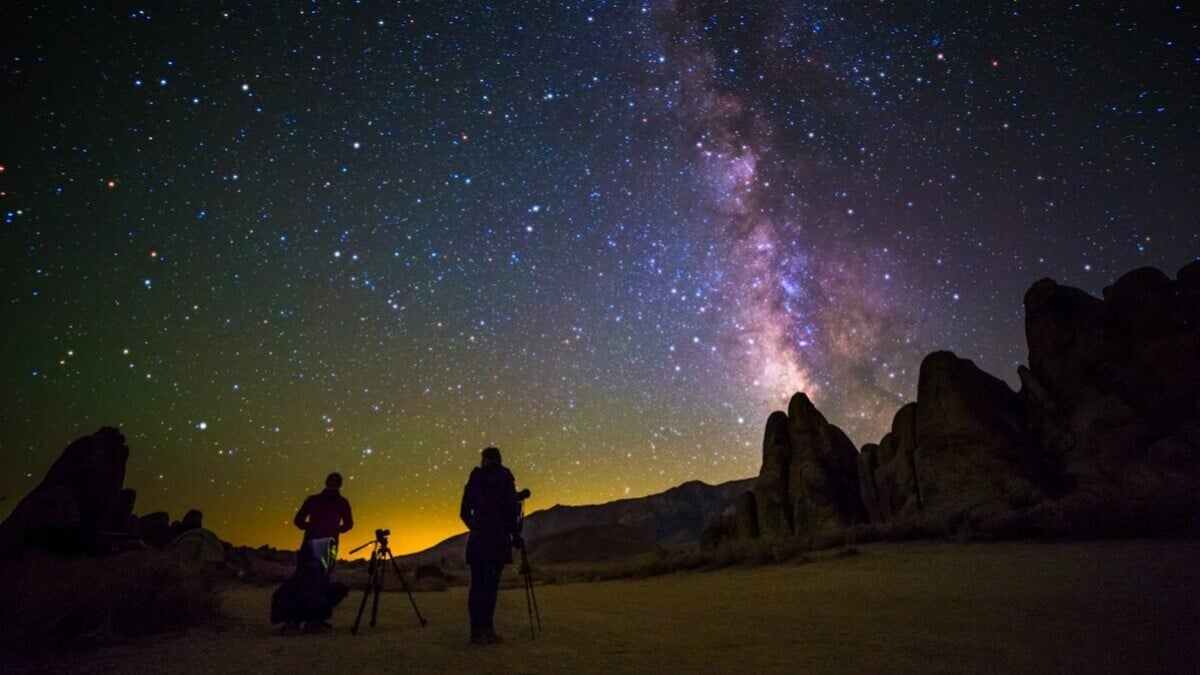Astrophotography and night sky photography occupy an important place at the intersection of art and science. These types of photographs allow us to capture supernatural beauty while expanding our observations.
These photographs, which are a reflection of our admiration and curiosity for the sky, bring together technical knowledge and artistic approach.
Astrophotography reveals stars, galaxies and planets in deep space. These photographs reveal the details of astronomical objects and magnificent views of the sky, offering us the opportunity to explore the infinity of the universe.
Night sky photography captures the unique interaction between the earth and the sky. It displays the twinkling of stars, the mysterious light of the moon, and skyscapes appearing beneath city lights. These types of photographs allow us to watch the dance of natural and artificial lights in the sky.
Astrophotography and night sky photography is a field that blends technical skills and artistic vision. Photographers are constantly discovering new ways to capture the stunning beauty of the sky through equipment selection, exposure settings, and composition techniques.
Ultimately, these types of photography strengthen our connections with the sky and remind us of the limitlessness of the universe. The stories and discoveries that lie within each frame make astrophotography and night sky photography an important bridge between art and science.
Gear Essentials: Cameras, Lenses, and Tripods for Astrophotography
Basic equipment for astrophotography is required to take successful photographs, and the technologies used in this field are constantly improving. Here is a brief introduction to the basic equipment required for astrophotography:
Camera: DSLR or mirrorless cameras are generally preferred for astrophotography. Models that can perform well in low light conditions and are suitable for long exposure times should be chosen.
Lenses: Wide-angle and high-aperture lenses are ideal for capturing sky details and expansive landscapes. In particular, lenses with fixed focal length and good low light performance should be preferred.
Tripods: A sturdy tripod is important for astrophotography that requires long exposure times. A good tripod ensures that the camera remains stable and clear photos are taken.
Besides this basic equipment, additional accessories such as a remote control, battery backups and necessary filters can also make your astrophotography experience more efficient.
When choosing astrophotography equipment, it’s important to consider your budget, the type of photos you’ll be taking, and the areas you want to specialize in. By choosing your equipment correctly and improving your technical skills, you can be prepared to explore the mysterious beauties of the sky.
Planning Stellar Shoots: Timing, Location, and Weather Considerations
Timing, location and weather conditions are very important in order to take successful shots for astrophotography. Here are the plans you can make taking these factors into consideration:
Timing: It is important to choose the right time to observe and photograph events in the sky. For example, you can plan your shots by following the state of the moon (full moon, new moon), the position of the planets and astronomical events such as meteor showers.
Location: Choosing a dark area without city lights will make the sky appear clearer and brighter. You can reduce the effect of environmental lights by shooting in a remote location or in a mountainous area, at a high point if possible.
Weather Conditions: Weather is a critical factor for astrophotography. A cloudy or foggy night may prevent you from observing sky details and stars clearly. Following the weather forecast and choosing a clear, clear night can improve the quality of your shots.
Planning and patience are important to be successful in astrophotography. Choosing the right time to take a good photo, finding a suitable location, and waiting for favorable weather conditions can make the results more impressive.
Long Exposure Techniques: Capturing Star Trails and Milky Way Galaxies
The long exposure technique is one of the primary methods of successfully capturing star trails and Milky Way galaxies in astrophotography. Let’s briefly introduce these techniques:
Shooting Star Trails: Star trail photographs show trails of stars that remain in a fixed point for long exposure times. Exposure times of many hours are often used to achieve this effect, and it is important to use a sturdy tripod to keep the camera steady.
Milky Way Galaxy Shot: A wide-angle lens and a camera that performs well in low light are used to get a clear view of the Milky Way galaxy. On a dark night with no moonlight, it may be possible to capture the details and colors of the Milky Way with long exposure times and low aperture.
The long exposure technique is a powerful tool used in astrophotography to reveal the movement of the sky and spectacular views of deep space. With these techniques, it may be possible to discover the mysterious and fascinating beauties of the sky and highlight them in your photographs.
Post-Processing Tips: Enhancing Contrast and Removing Noise in Night Sky Photos
When processing your night sky photos, increasing contrast and removing noise can make the results more impressive. Here are some tips on how you can do these things:
Increasing Contrast:
- Using Curves: You can adjust the tone curve to make the stars and details in the sky more prominent. The S-reduction curve can darken shadows and brighten highlights.
- Contrast enhancer: This can help you focus on the sky and stars and make them more prominent.
Removing Noise:
- Post-processing software: You can use a professional photo processing software to reduce the noise introduced during long exposures. Such software often offers advanced noise reduction tools.
- Use a camera that performs well in low light: To minimize noise, it is important to choose a camera that performs well in low light. This can help your photos look natural and clean.
When processing your night sky photos, you can improve the quality of your photos with the right contrast settings and noise reduction techniques. Each photo may need processing, so be patient and experiment with the processing process.
Celestial Events: Photographing Meteor Showers, Eclipses, and Auroras
Photographing celestial events is one of the most exciting aspects of astrophotography. There are some basic strategies for successfully photographing celestial events such as meteor showers, solar and lunar eclipses, and aurora observations:
Meteor Showers: To photograph meteor showers, choose a time when the night sky is clear and shoot in a dark location, away from city lights. Cover a wide area of the sky by using a wide-angle lens and wait for long exposure times.
Solar and Lunar Eclipses: To photograph solar and lunar eclipses, determine the correct time and location in advance. Be sure to wear sunglasses during solar eclipses, and during lunar eclipses, record the movement with a stable tripod and long exposure times.
Aurora Observations: To observe and photograph the Aurora Borealis (Northern Lights) or Aurora Australis (Southern Lights), you may need to be in a dark place, away from city lights. You can photograph their colorful dances with a camera with low light performance and a wide-angle lens.
Be patient and use the right equipment when photographing celestial events. By considering the technical details and the right timing, you can capture unforgettable moments in astrophotography.
See you in the next post,
Anil UZUN

